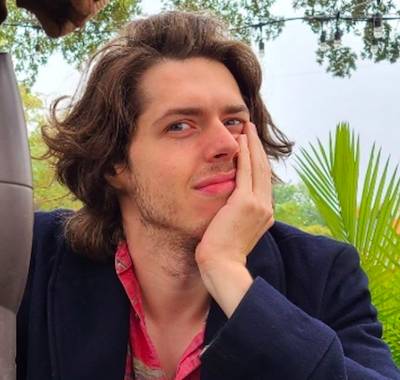“Twisters” Editor Terilyn A. Shropshire on Whipping Up a Winning Cut
For editor Terilyn A. Shropshire, Twisters was a homecoming. Director Lee Isaac Chung shot the satisfying popcorn picture on 35mm, and Shropshire, who cut her teeth on 8mm, 16mm, and 35mm, was thrilled to see flash frames again on Twisters. Most of the excitement came in color timing and seeing the end results, but still, the texture alone of the footage shot by cinematographer Dan Mindel, was a thrill to cut.
Twisters is a long-awaited sequel that prioritizes character-driven spectacle over familiar nostalgia. In it, storm chasers in Oklahoma, namely Kate Carter (Daisy Edgar-Jones), Tyler Owens (Glen Powell), and Javi (Anthony Ramos), track a series of increasingly dangerous tornadoes. The characters are grounded heroes seeking to not only track tornadoes but also prevent disasters in small towns.
The well-rounded characters were well-protected by Shropshire, known for Eve’s Bayou, Love & Basketball, and The Woman King. Recently, she told The Credits how she made the action feel both personal and visceral.
The opening shots are so Spielbergian. You all say a lot with a few shots of silence of Kate in the field. What did you want those opening moments to establish?
It was important for Isaac to shoot this film in Oklahoma. As someone who grew up in Arkansas and grew up in that type of world of the farm and broad expanse, I think that’s how he wanted to bring you into the film. I had never really been to Oklahoma before, and I swear I’ll never look at the sky the same way again. So, it was very important to him to have that scope from the very beginning so that you could see the world in which Kate grew up and that she truly loved this place, this space. And so, with Dan Mindel, the decision to shoot it on film, the decision to shoot it anamorphic was a product of wanting to be viscerally immersive as far as the country, the sky and the landscape of the environment.
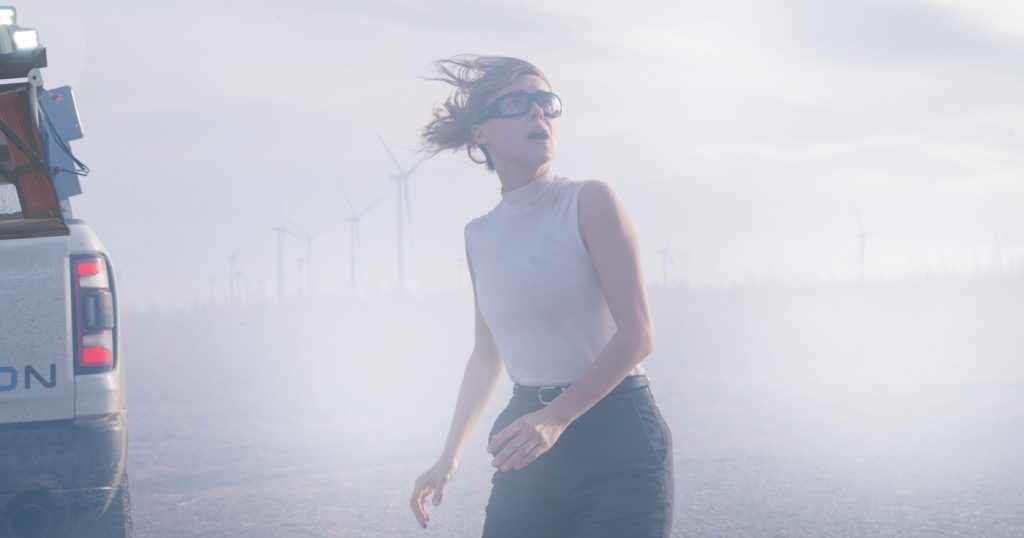
Tell me if I misread this, but Isaac filmed drone photography of tornadoes, and they found their way into the movie. Is that true?
Oh yeah. Basically, we had first, second, and C units, but there were also stormchasers who were literally out in the field. Some of the photography they were doing would come back to us, and there had been an agreement, I guess, to license certain things. What was great is we had what we had shot, but we also had material that they had shot. We had resources, whether it was for just references for visual effects or whether it was something that ultimately we thought that we could use within the film.
Where’d you use that storm chasers’ footage in the film?
Actually, when you see Kate and when the first team goes out. The character Addy (Kiernan Shipka) has her head out the window and is like, whoa, taking photographs. There’s literally a passing shot there. It wasn’t a drone shot, but it was a shot that was from one of the storm chasers. Then there’s the drone stuff that was shot. Basically, when you saw a lot of the windmill photography, that was drone photography, and some of it was helicopter photography, so we had both going. We had all kinds of things flying in the air.
You were on set, cutting the film. When Isaac was shooting, what key questions did you have for each other?
Basically, maybe the second unit had to have shot something first, and then the first unit came in after them, and Isaac might want to come in and see something the second unit shot or vice versa. Sometimes, it was something where the main unit shot first, and the second unit fell behind in getting additional photography. And so, to the degree that I could, I kept everybody aware of continuity and consistency. Isaac would just come sit on the couch, maybe look at dailies. If it was for a scene he was about to shoot, sometimes it was just looking at what preceded it. If I had what preceded it or what followed it, he’d sometimes come in and take a look.
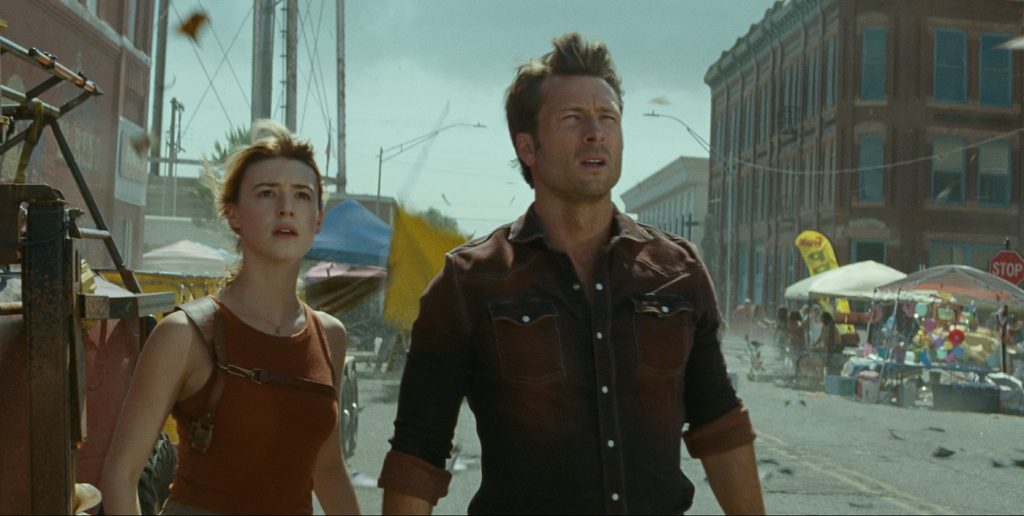
One shot people are talking about already is Tyler Owens walking outside in the rain, stoic with his cowboy hat. It’s a great movie star moment, but you also feel the weight on the character’s shoulders. How’d you want to pace that shot just right?
What’s great about it is that I got to be one of the first audiences to see the film in its raw form. When I watch dailies for the first time, unless I’m under some crazy time constraint, I try not to pick up a pen and literally sit there—I’m in a theater watching it. So, you see dailies come in like that, and you’re like, “Damn, it’s good.” It just said so much about who this guy was. One of my favorite moments is literally when he looks to the window, obviously after he and Kate have had a bit of an argument. It’s just so beautiful because Tyler, he’s got this bravura, but you get to see him evolve and see his vulnerabilities and see his fear.
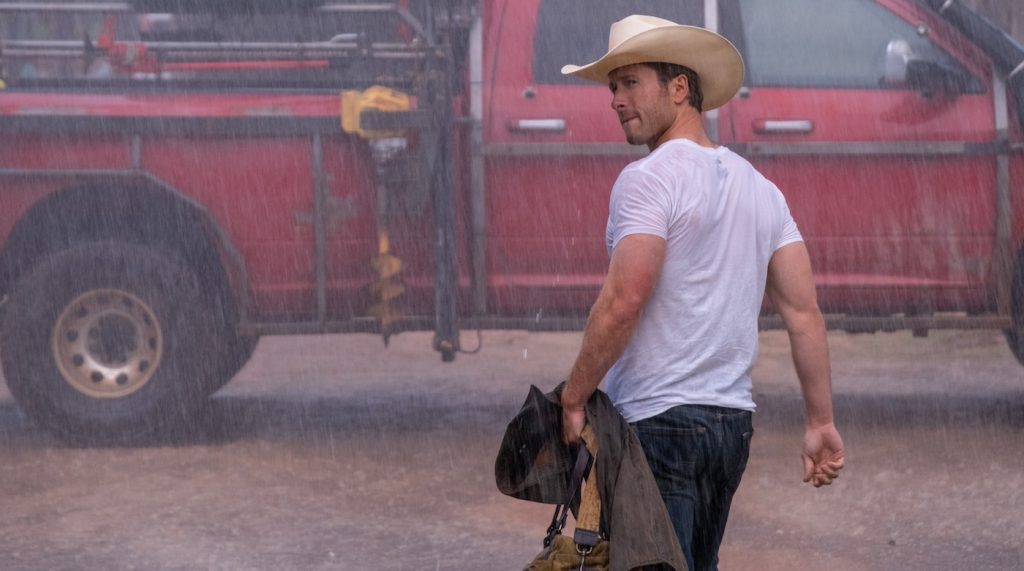
You let the moment breathe.
That’s one of those moments when, for me as an audience member, I really started to fall in love with this character. It is when you see the other side of someone, something that they may not initially show you. You feel like you have a little private moment with them with, of course, 200 other people in the theater. This is what’s great about being in a movie theater and sharing these intimate moments privately but collectively. So, for that moment, let him walk all the way and not cut… I mean, that’s the thing as an editor: sometimes it’s not about when you’re cutting, but when you’re not cutting and letting a moment like that happen.
There is so much character growth and chaos in the final act. With all the moving pieces, what did you hope to accomplish with the third act in Twisters?
I want you not to think. I want you to live in the moment. Sometimes, when we’re watching a film, we try to be ahead of the filmmaker. You’re trying to jump ahead; oh, this will be so predictable. When you get to that point in the film, I want you to be with Kate. I want you to be with all of them. By the time you get to that final moment, I want you to have imprinted on every single person that is either in that truck or in that theater and really be feeling all the feels, the anxiousness, the anxiety, the hope, the fear, all of it, the excitement, that sense of this woman overcoming the one fear that she had. She’s facing her fear in a heroic way. At the end of it, I want people to have this big sigh and sense that they went through something immersive, visceral, and exciting. That’s why we go to the movies, right? We just want to be taken to someplace and not know how we got there.
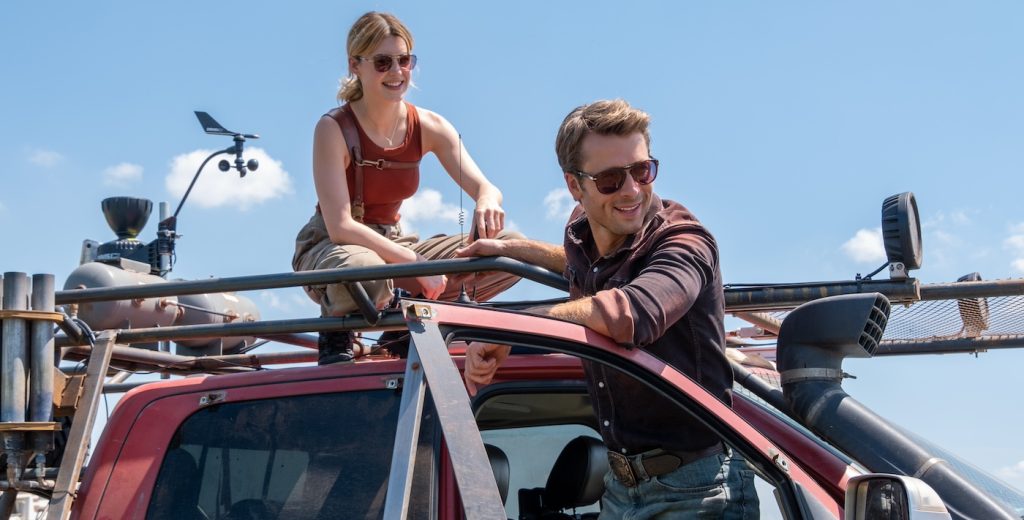
For more on Twisters, check out these stories:
Following Its Predecessor’s Successful Path, “Twisters” Touches Down in Oklahoma
Riding the Storm of the Century in the New “Twisters” Trailer
Glen Powell Ready to Twirl in “Twister” Sequel With Daisy Edgar Jones
Featured image: (from left) Tyler (Glen Powell) and Kate (Daisy Edgar-Jones) in Twisters, directed by Lee Isaac Chung.


